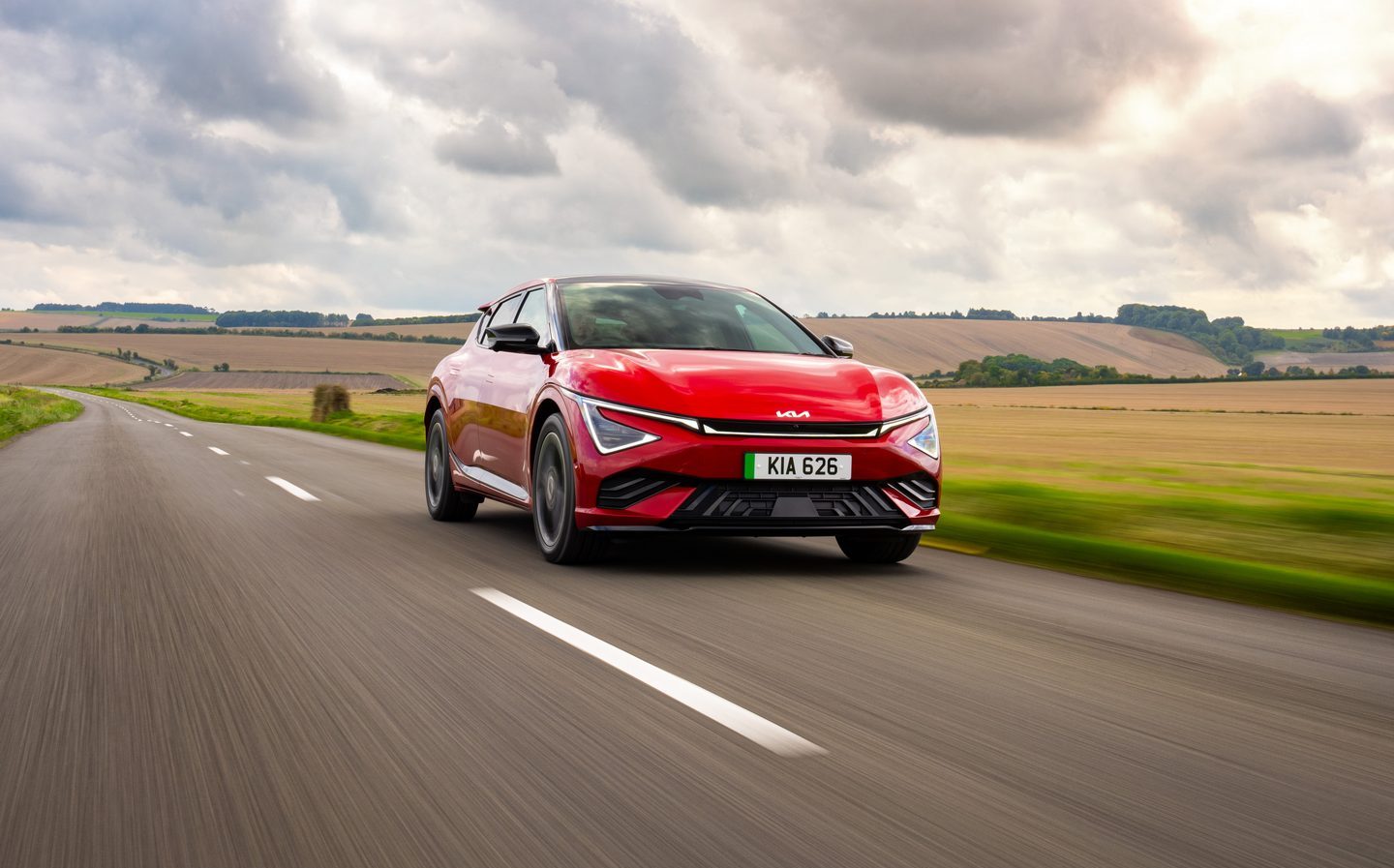Kia EV6 2024 review: Now every version of the electric hatchback can cover more than 300 miles (oifficially)
More range, quicker charging times
While some car manufacturers scrabble around for a trendy marketing identity for their range of electric vehicles — think VW’s “I.D.” or Maserati’s “Folgore” — Korean manufacturer Kia has always kept it simple and just gone with “EV”. Does what it says on the tin, right?
Of course, you have to ignore the period that the small electric crossover now known as the Niro EV went by the name of e-Niro, but in essence Kia just picks a number that roughly correlates to the vehicle in question’s size, then sticks EV in front of it.
So, the EV9 is a giant seven-seat SUV, one which won the UK Car of the Year award in 2024. The forthcoming EV3 is a smaller crossover, designed for urban living. And yet, the one that started this Ronseal naming trend is the spaceship-shaped EV6, which became the first-ever Korean car to win European Car of the Year, in 2022.
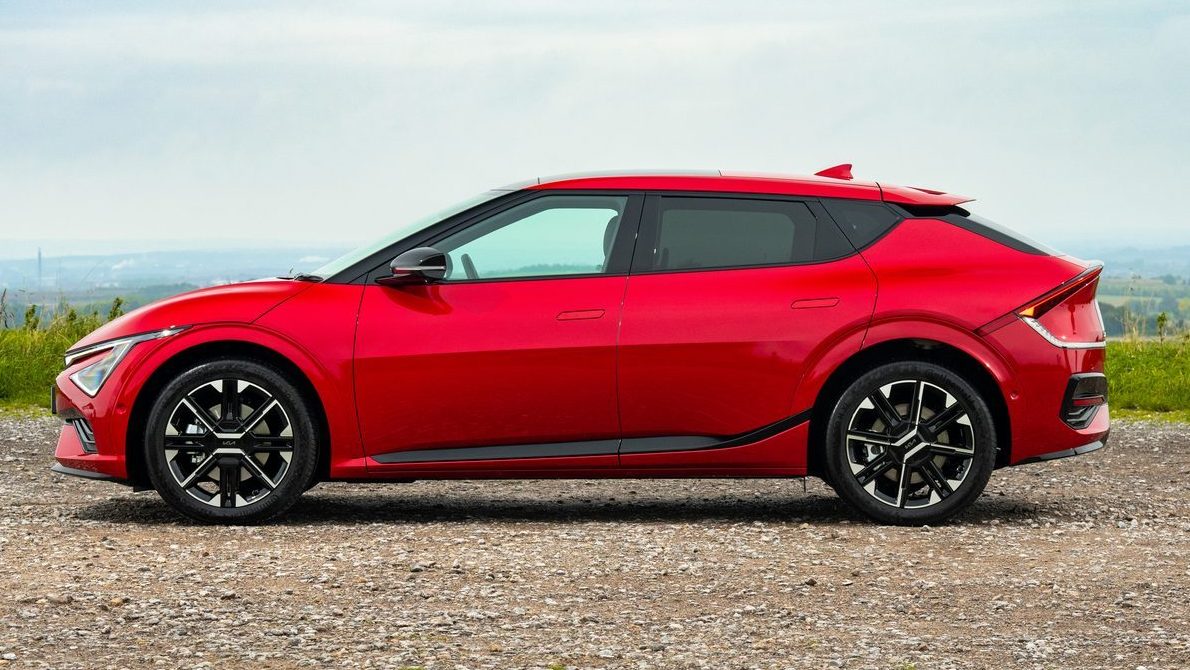
Preserving the pattern of only naming these EVs after multiples of three, the EV6 is a large, hatchback-type electric car that first arrived in 2021.
Its strengths were its advanced 800-volt architecture, which allowed for super-rapid charging times, and a big battery pack that gave certain derivatives of it an official range of more than 300 miles.
Rightly, as a result it became a showroom success. More than 210,000 EV6s have already been sold worldwide in just three years, and now it’s time for Kia to update the car to keep it relevant for another two or three years hence.
It’s therefore understandable that Kia has decided not to throw the baby out with the bathwater during this update, keeping the changes modest — but still worthwhile.
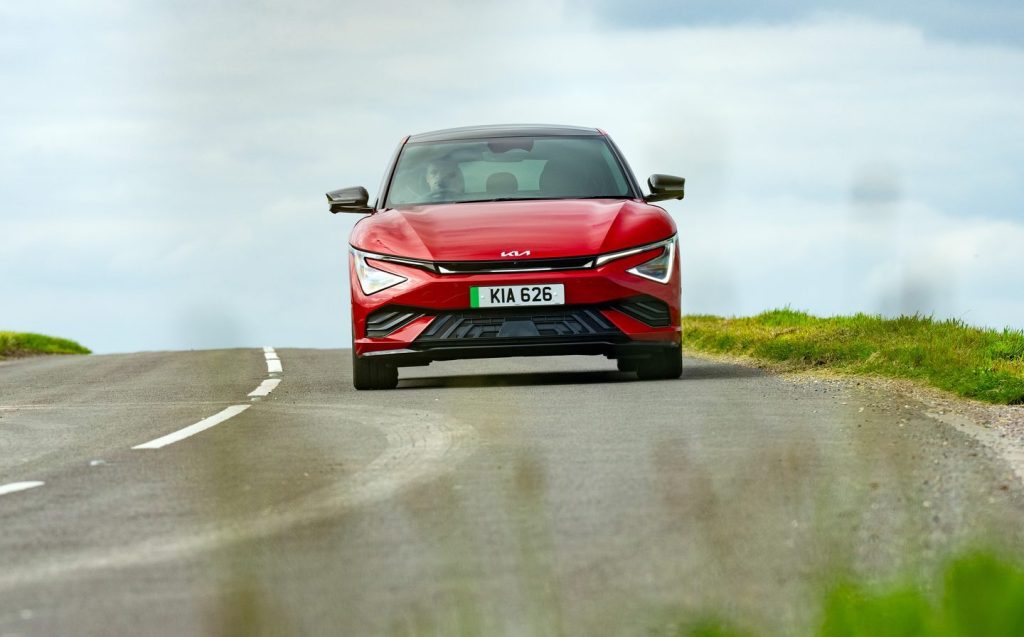
There are cosmetic updates, of course, and the new EV6 has the jagged, angular daytime running lights that span the full width of the car, aesthetically tying it in with newer models, not least that EV9.
Kia calls the light cluster pattern the “Star Map”, which is repeated in the rear-lamp clusters too.
Beyond that, there are some new body colours introduced and a snazzy design of 20in alloy wheel on the top-spec GT-Line S models, but this is the familiar, smoothed-off, swoopy shape of the EV6 from before, and in truth, while it has been sharpened in a few critical places, most road users will struggle to see the changes.
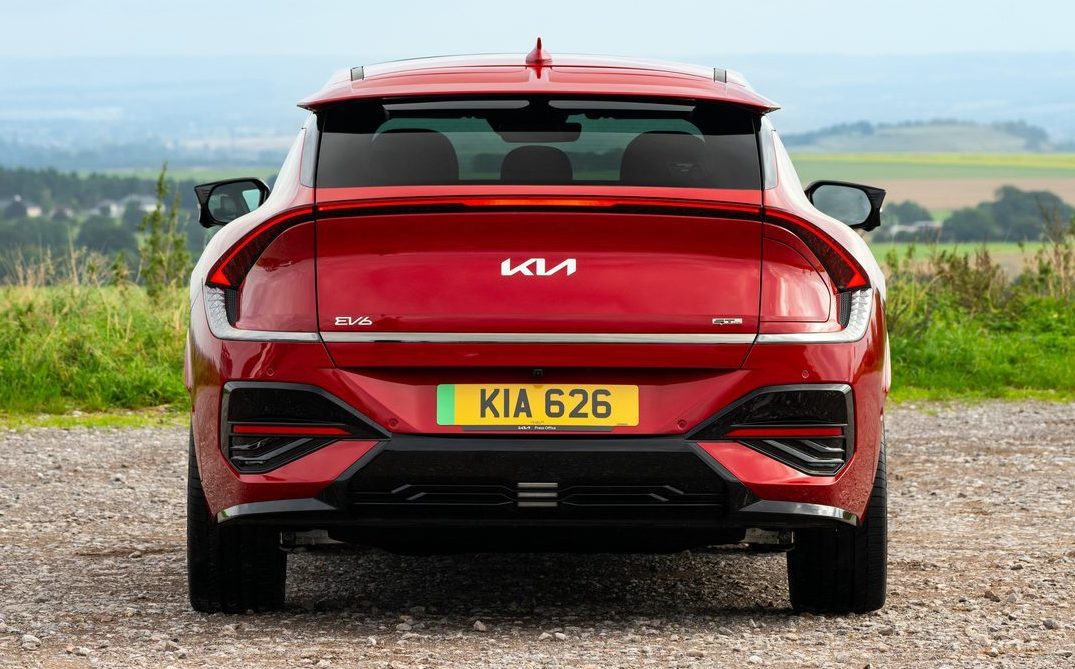
Similarly, inside there wasn’t a great need for remedial restructuring. The steering wheel is new, and very attractive, and Kia has replaced glossy piano-black surfaces with a brushed, textured finish to eradicate that bane of touch-heavy modern car interiors: scratches and greasy fingerprint smudges, everywhere.
Talking of such things, on GT-Line S models there’s an advanced fingerprint recognition system integrated into the centre console, so that owners can start the car and enjoy all their preferred driving and infotainment settings without needing either a smart or digital key. All very James Bond.
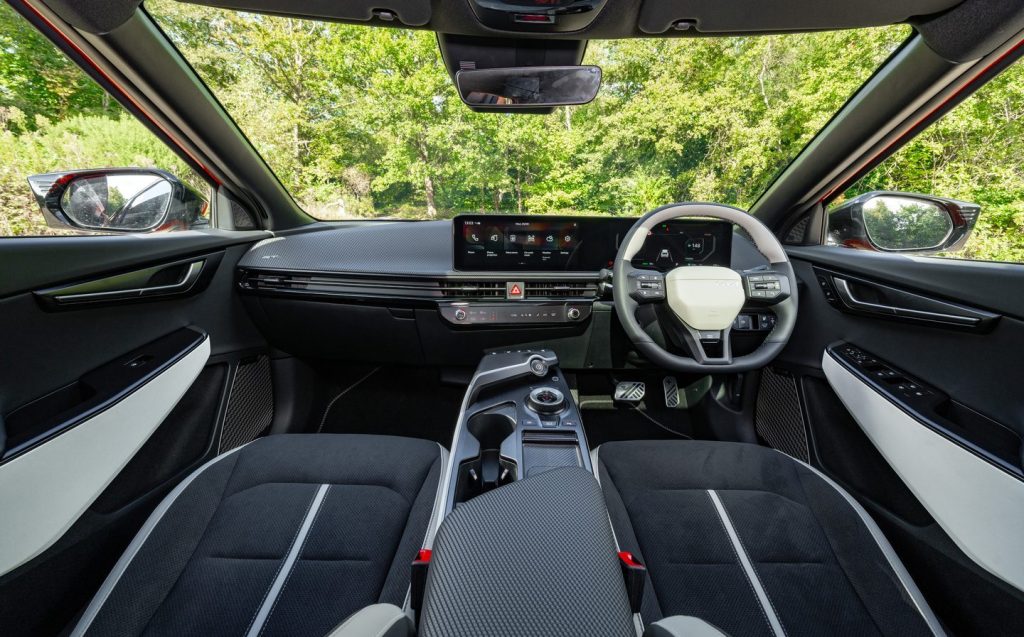
Kia has also redesigned the ambient lighting to accentuate the cabin’s horizontal lines when you’re travelling in the EV6 at night, while it has further added a 15-watt smartphone charging pad to proceedings.
Vegans will be pleased, because while the seats on the grand GT-Line S model look like they’re made of black suede centres with white leather trimmings, neither of these two fabrics comes from an animal — they’re both artificially made. Thankfully, they look and feel suitably high quality, so no worries on that front.
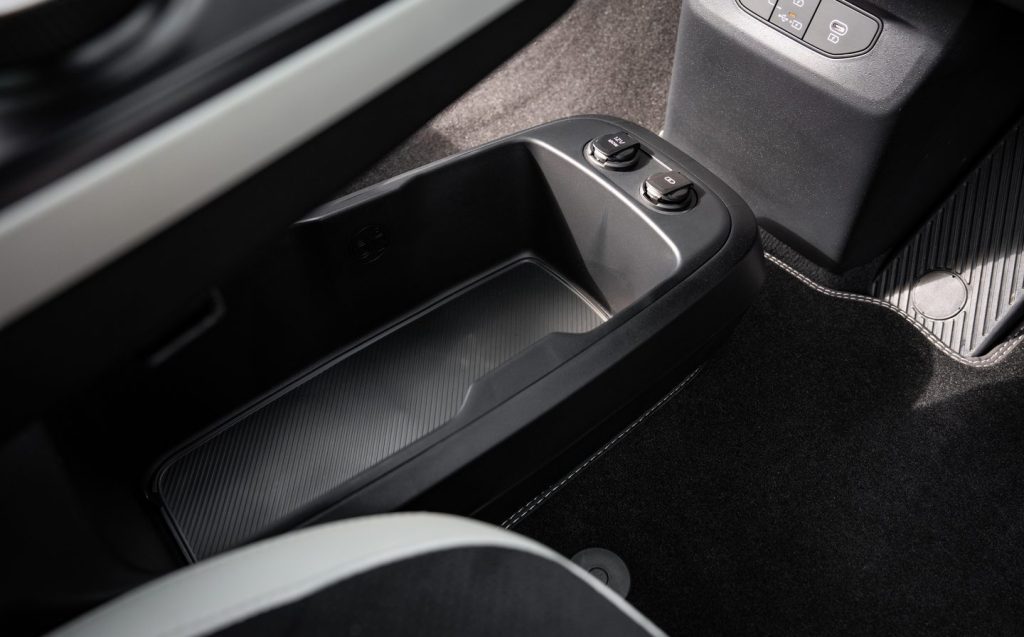
Otherwise, much of what made the Kia’s interior so good before is retained. You get twin 12.3in screens housed in a large, curved display on the top of the dashboard, but Kia gives you that clever, switchable strip of digital controls beneath which you can use to toggle between climate functions and navigation settings.
This means you always have physical climate controls easily to hand, and enthusiasts of not crashing — through keeping their eyes on the road as much as possible — will prefer this to tapping away several times at the main central touchscreen.
Furthermore, the Kia EV6 sits on EV-dedicated underpinnings, so there’s a flat floor in the rear of the passenger compartment and therefore the genuine possibility of transporting five people in the car in reasonable comfort.
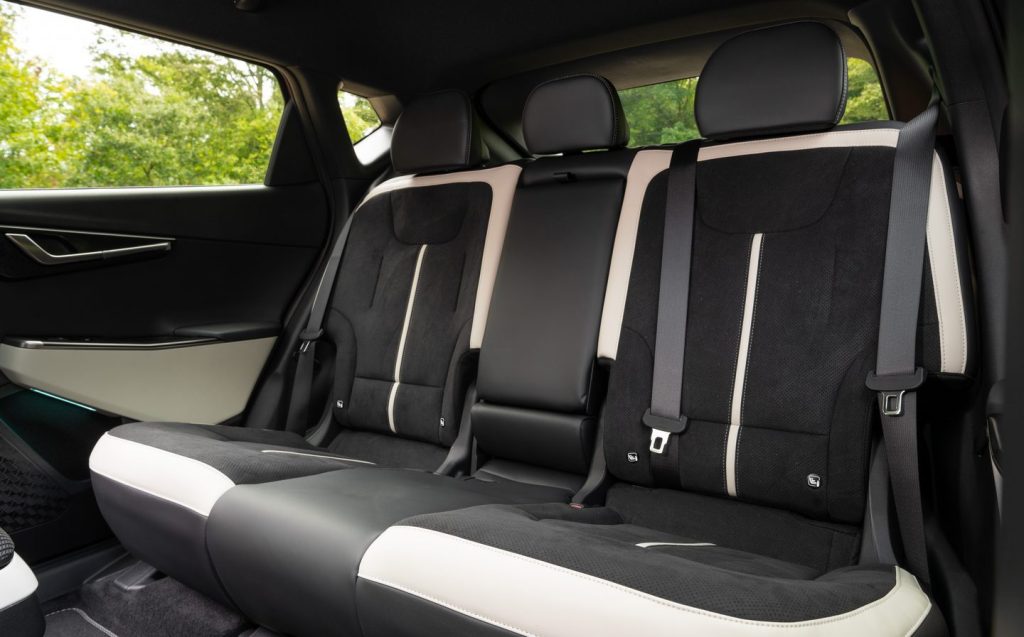
The boot’s a fine size as well, measuring 528 litres minimum and rising to 1,300 litres with the rear seats down. It’s not a vast amount of space, as some similar full-on electric SUV will hold more, but by the same token the EV6 will accommodate about 30 per cent more clobber than a Volkswagen Golf, for instance.
Buyers get some front luggage storage in the EV6 for further practicality, although less on the all-wheel-drive (AWD) model than the single-motor, rear-wheel-drive (RWD) variant due to the placement of the additional front motor on the former. For reference, there’s 52 litres available on the RWD and 20 litres on the AWD.
Mention of motors brings us onto the drivetrains, which have been enhanced. The battery pack’s capacity has been increased from 77.4kWh to 84kWh unit, and that equates to every EV6 now being able to travel significantly more than 300 miles to a charge — or, at least, that’s the official word.
On paper, RWD versions can go up to 361 miles in the lower Air and GT-Line specifications, although the bigger wheels and extra kit of the GT-Line S reduces that figure to 347 miles.
Meanwhile, the AWD goes 339 miles as a GT-Line and 324 miles as a GT-Line S, as it is not available in Air specification.
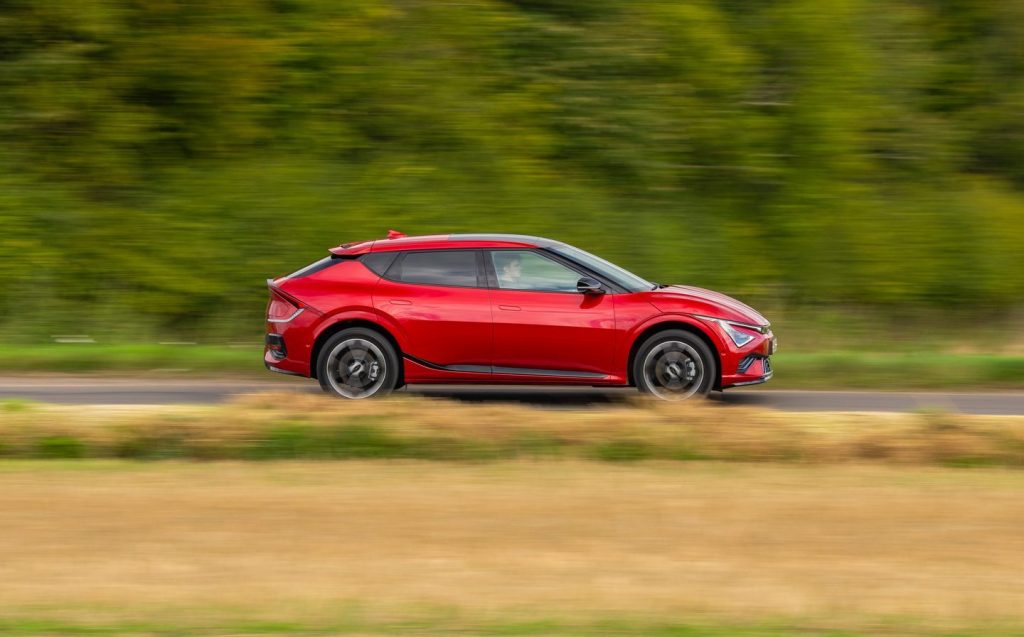
And while owners are unlikely to achieve those numbers — EVs tend not to go as far in the real world as the official on-paper range figures, due to a variety of factors (cold weather and motorway speeds are particular nemeses of official range figures) — at least the Kia is quick to recharge.
It’s now eight per cent faster to top up its battery, with a peak rate of 258kW on a DC rapid charger (previously 239kW), meaning a 10-80 per cent charge on a motorway trip ought to take just 18 minutes. Or, put another way, as much as 214 miles of driving range added for every 15 minutes hooked up to the charger. Using those rapid chargers is very expensive but it’s reassuring to have that kind of charging performance when you need it on long journeys.
To go with this battery, there’s either a single rear-mounted motor with 225bhp and 258lb ft of torque (twisting force), which are numbers considerably less than a hot hatchback makes these days. That results in 0-62mph in an adequate 7.7 seconds.
If you need more performance, then the AWD delivers 320bhp and 446lb ft, which results in a 5.3-second 0-62mph, with a 1mph higher top speed, too. But we suspect most people will simply stick with the single-motor EV6, because it’s all the car you could need.
The Kia is one of those vehicles that does so many things so effortlessly well that it’s hard not to fall for it within a few metres of setting off up the road. For example, the calibration of both the accelerator pedal and the regenerative brakes is superb. And as the EV6 doles out its power in a neat, linear fashion, driving it quickly but smoothly becomes second nature to the driver.
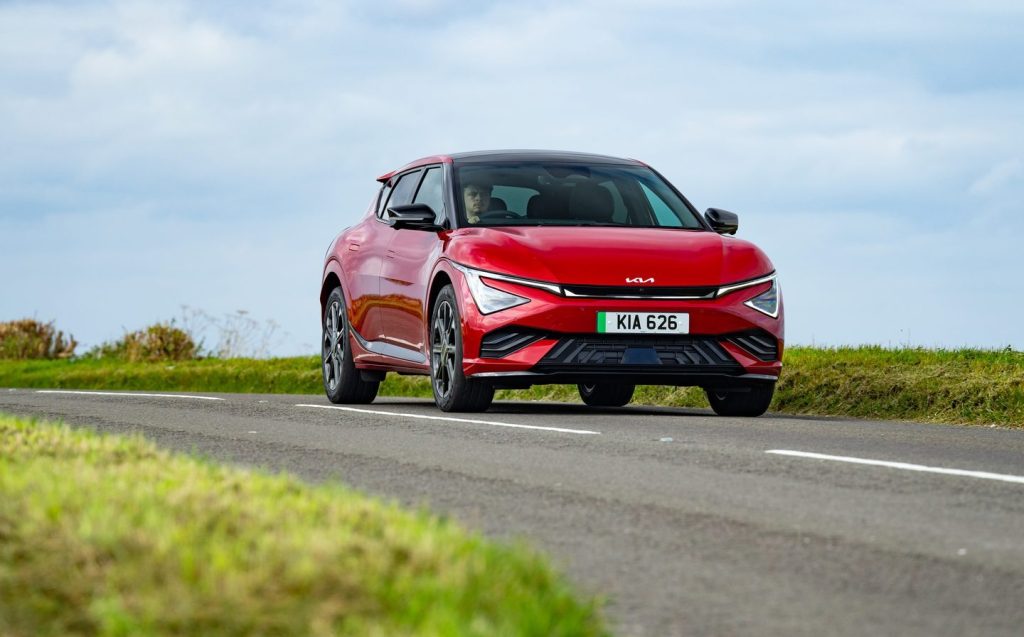
It’s the same story with the ride and handling. Kia has worked on the suspension, with its fancy “frequency selective dampers” (FSDs), but in truth the EV6’s amenable dynamics needed little alteration and the vehicle feels just as sure-footed now as it did three years ago.
Rare is the occasion when the super-quiet, ultra-comfortable interior ambience of the EV6 is spoilt by the 20in wheels thudding into imperfections in the road surface, and it seems to be every bit as good at blanketing out potholes and lumps in the tarmac at town speeds as it is oozing along a motorway at 70mph.
The handling is even pretty sweet, although this is the one area the EV6 shows a glimmer of weakness. The steering is light and accurate enough, but it’s not massively informative. And while there might be a trace of rear-drive behaviour to the single-motor model, at no point does the Kia ever feel particularly invigorating in the corners.
But with superb body control, masses of grip and traction which is largely unimpeachable, it’ll cover ground at an impressive rate if you need it to, even on more twisting country roads.
You can switch the EV6 through Eco, Normal and Sport driving modes — there’s also a configurable Individual setting, and a Snow one, too — and you will discern subtle differences between response to accelerator inputs and steering weighting in each one.
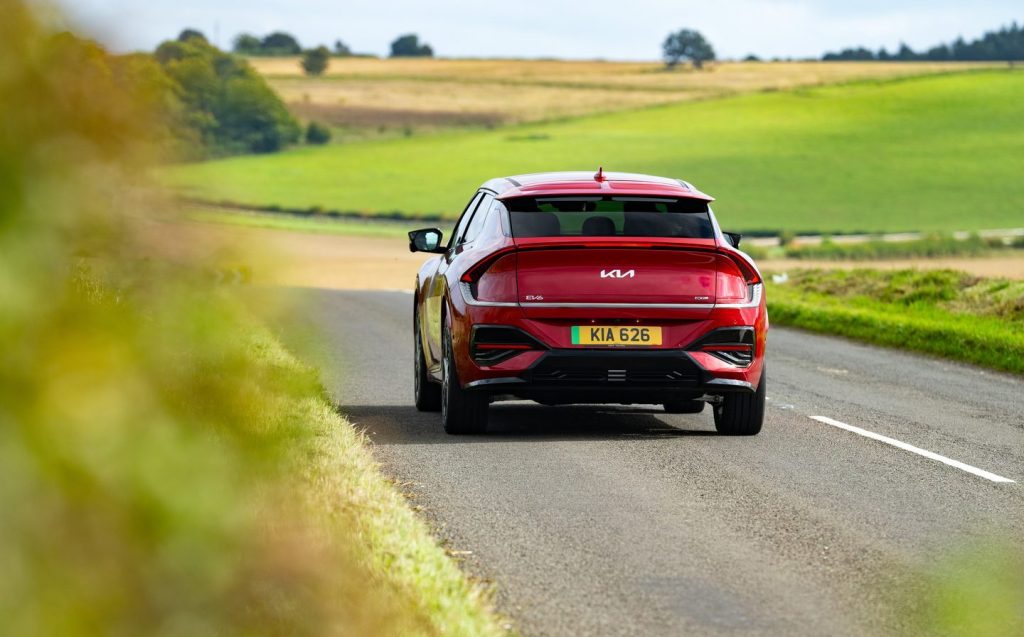
Yet none of them transform the Kia into anything that might be approaching more stringent criticism. Which basically means you can leave it in Normal mode and not worry about things too much, further bolstering its easy-going nature.
It doesn’t even make any particularly weird EV noises when cycling through these settings, with about the only giveaway anything is happening being a change to the graphics in the instrument cluster, with specific appearances for each mode.
So aside from an inert roadholding experience and the merest whiff of familiarity breeding contempt of the EV6, what you have here is one of the best electric cars on the market right now.
It’s stylish, spacious, comfortable, quiet, well equipped, refined and decently quick in all specifications, as well as possessing one of the longer official range figures of any EV on the market.
Perhaps the one major issue with the EV6, then, is a weird one for Kia: its price.
Both the GT-Line S models we tested, a RWD and also an AWD, were comfortably the wrong side of 50 grand. In the AWD’s case, it was getting on for nearer £60,000 with its options and such.
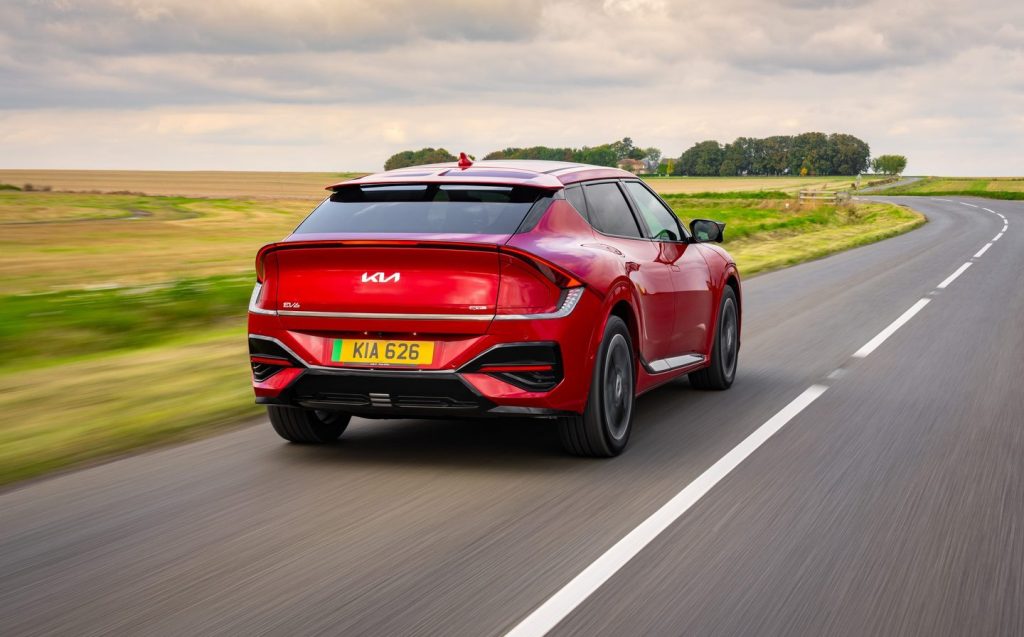
You could cite these as extreme outliers in the EV6 line-up, maybe, if it weren’t for the fact that the entry-level 225bhp RWD Air kicks off at a meaty £45,575.
There’s only one other model available on Kia’s configurator that’s less than £50,000 before you’ve started ticking any equipment boxes.
A lot of money? Or, put in more modern parlance, a lot of money for a Kia? Perhaps, though Kia is introducing much more affordable EVs in its range (the forthcoming Inster, for example), so the EV3, EV6 and EV9 could be seen as Kia’s premium electric models.
And besides, one could argue that this is an object lesson in how you do a highly competent, long range and likeable EV that’s nevertheless a good way off “boring”. There’s something about looking at and driving the EV6 which still feels special and otherworldly, and that’s hard to accomplish — you only have to look at plenty of soulless rival electric cars to see it’s an easy trap for carmakers to fall into.
So, while the Kia EV6 might be a standout example of naming plain speak, the simple fact of the matter is that if you want a spacious, family-friendly EV that’ll go the distance, you won’t do much better than this Korean award-winner. It’s a quite brilliant car.
Related articles
- If you found this review of the updated Kia EV6 interesting, you might like to read our review of the Kia EV9
- Or catch up on all the car makers’ electric plans
- Have you read Jeremy Clarkson’s review of the Kia Sportage?
Latest articles
- Lewis Hamilton wants to design a modern day Ferrari F40 with manual gearbox
- Dacia Bigster 2025 review: The ‘anti-premium’ family SUV that punches above its weight
- Your car’s worn tyres could be being burnt illegally in India, investigation reveals
- Open-top 214mph Aston Martin Vanquish Volante is world’s fastest blow-dry
- F1 2025 calendar and race reports: The new Formula One season as it happens
- Alfa Romeo Junior Ibrida 2025 review: Hybrid power adds an extra string to crossover’s bow
- Top 10 longest-range electric cars: all with over 400 miles per charge (officially)
- Renault 5 Turbo 3E ‘mini supercar’ confirmed with rear in-wheel motors producing 533bhp … and insane levels of torque
- British firm Longbow reveals ‘featherweight’ electric sports cars with 275-mile range


